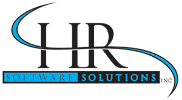Even with the sequester, the U.S. economy is working its way to a full recovery, which was further seen in April’s jobs report released today. According to the Bureau of Labor Statistics, 165,000 new positions were added last month and the unemployment rate fell to 7.5 percent.
Additionally, the report showed that March’s job numbers were revised from 88,000 to 138,000 and February’s data was revised upward from 268,000 to 332,000.
Kathy Bostjancic, director of macroeconomic analysis for the Conference Board, told CNBC that the job market looks better, even with the sequester and rising cost of healthcare benefits. The key now, though, is to remember that hiring could be difficult in the spring and summer months.
Mark Zandi, chief economist at Moody’s Analytics, was not as optimistic when he spoke on MSNBC on Friday. Zandi warned that the worst effects from the sequester are still going to be felt.
“I think the sequester is going to hurt. I think it’s already hurting,” he said. “The job growth numbers are beginning to weaken, and I think we will see weaker job growth numbers in the spring and summer. In fact, the sequester effects on the job market will be at their largest in the third quarter.”
For companies that are looking to bring on more workers, having a strong HR software solution is essential. It can not only help human resource teams stay organized, but also assist in pointing out which departments could benefit from more employees. Partnering with human resources software companies can help an organization find the best option to meet their staffing needs.

